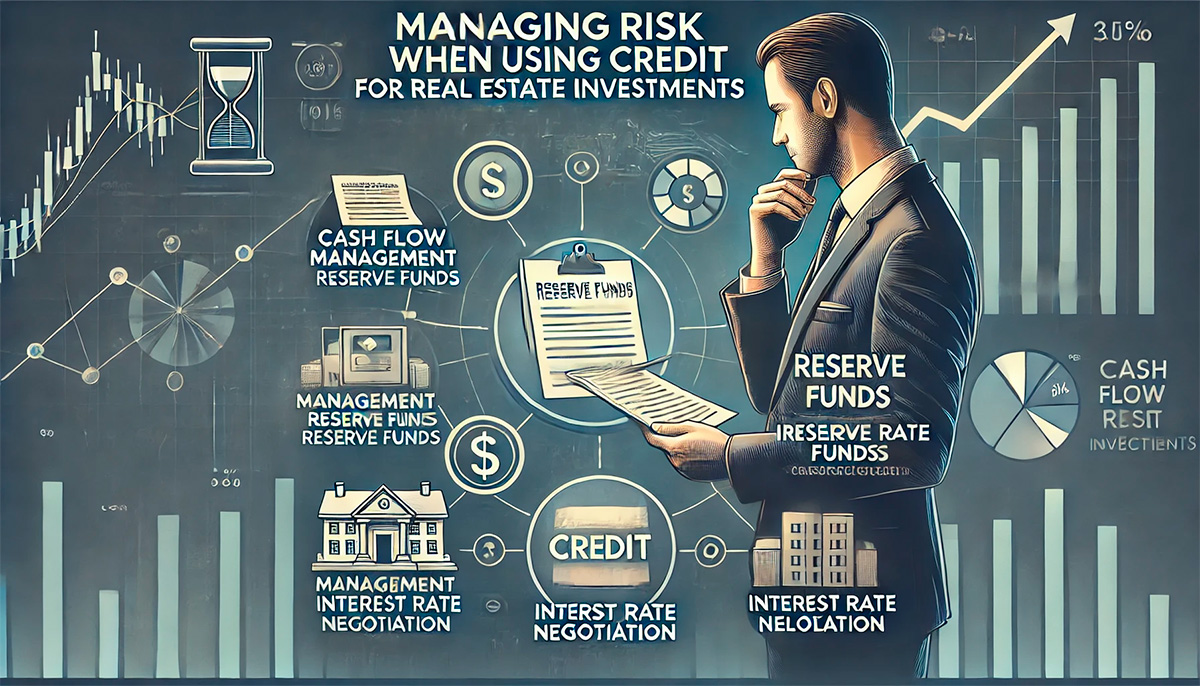Real estate is one of the most attractive investment options for individuals looking to build long-term wealth. However, purchasing property often requires significant capital, which can be a barrier for many aspiring investors. This is where credit comes in as a powerful tool. By leveraging credit effectively, investors can access real estate opportunities that might otherwise be out of reach. In this guide, we’ll explore how to invest in real estate using credit, the types of loans available, and how to manage risk when borrowing to fund property investments.
Why Use Credit for Real Estate Investments?
Credit allows investors to gain access to real estate with a fraction of the property’s total cost upfront. Instead of waiting years to save the entire amount for a property, credit provides the flexibility to act on investment opportunities immediately. This means you can start earning rental income, benefit from property appreciation, and take advantage of tax benefits while spreading out the cost of the purchase over time.
Additionally, real estate investments often offer a stable and predictable return, especially when compared to other asset classes like stocks or cryptocurrencies. Leveraging credit in real estate allows investors to take on larger opportunities and build a portfolio faster than they could with savings alone.
Types of Credit Options for Real Estate Investments
There are various ways to use credit when investing in real estate, each with its own set of benefits and risks. Understanding the different financing options is key to choosing the one that aligns with your investment goals and financial situation.
1. Mortgages
The most common way to finance a real estate investment is through a mortgage. Mortgages allow investors to pay a down payment, usually 20%, and borrow the rest of the purchase price from a lender. The loan is then repaid over time with interest. Mortgages are particularly advantageous because they come with lower interest rates compared to other forms of credit, and the long repayment terms make them manageable for most investors.
2. Home Equity Loans or HELOC
If you already own a property and have built equity in it, you can use a home equity loan or a home equity line of credit (HELOC) to fund a new investment. With a home equity loan, you borrow against the equity you’ve built in your property, and with a HELOC, you have access to a revolving line of credit. These loans can provide the capital needed to purchase additional properties or renovate an existing property to increase its value.
3. Bridge Loans
Bridge loans are short-term loans designed to help investors purchase a property while waiting for long-term financing or to sell an existing property. These loans come with higher interest rates, but they provide the necessary capital to close deals quickly in competitive markets. Bridge loans are typically repaid within a year and are best suited for investors looking to flip properties or acquire a new home before selling their current one.
4. Personal Loans
Personal loans can also be used to finance real estate investments, although they usually come with higher interest rates and shorter repayment terms than mortgages or home equity loans. They are best for smaller investments or as supplementary financing when other options are not available.

How to Use Credit Wisely in Real Estate
While credit can be a powerful tool for real estate investing, it also comes with risks that need to be managed carefully. Here are some tips on how to use credit wisely to maximize your returns and minimize financial stress:
- Calculate your cash flow: Ensure that the rental income from the property will cover your loan repayments, property taxes, maintenance costs, and other expenses. Positive cash flow is key to making a credit-financed real estate investment sustainable in the long term.
- Secure favorable interest rates: Shop around for lenders and negotiate the best interest rate possible. Even a small difference in the interest rate can have a significant impact on your overall returns.
- Start small: If you’re new to real estate investing, start with smaller properties to minimize risk and gain experience managing a credit-financed investment. You can gradually expand your portfolio as your confidence and financial capacity grow.
- Build a reserve fund: Set aside a portion of your rental income as an emergency fund. This will help cover unexpected expenses or vacancies, ensuring you can continue making loan payments even during tough times.

Managing Risk When Using Credit for Real Estate Investments
Any investment that involves borrowing money comes with inherent risks. It’s important to manage these risks effectively to avoid financial strain or even foreclosure. Below are a few strategies to help you navigate these risks:
1. Diversify Your Portfolio
One way to manage risk is by diversifying your real estate portfolio. Rather than putting all your capital into a single property, consider spreading your investments across different property types (residential, commercial, multifamily) or locations. This reduces your exposure to market downturns in one specific area or sector.
2. Consider Loan-to-Value (LTV) Ratios
Lenders use Loan-to-Value (LTV) ratios to determine how much they are willing to lend. A lower LTV means you are borrowing less relative to the property value, which reduces your financial risk. Keeping your LTV ratio below 80% can provide a cushion in case the property’s value declines or you experience cash flow issues.
3. Monitor Market Trends
Staying informed about real estate market trends is critical for timing your investments. Economic shifts, interest rate changes, and property demand can all influence the profitability of your investment. When you use credit to invest in real estate, understanding the market ensures that you’re making informed decisions and can adapt if conditions change.
Example of Successful Real Estate Investment Using Credit
Let’s look at a practical example. Suppose an investor buys a rental property worth $300,000 using a $240,000 mortgage (80% LTV) and a $60,000 down payment. The investor rents out the property for $2,500 per month, while the mortgage payment, including interest, is $1,800 per month. After accounting for property taxes, maintenance, and insurance, the investor nets $400 per month in positive cash flow. Over time, as the property appreciates and the mortgage is paid down, the investor builds equity and can either sell the property for a profit or refinance it to purchase additional properties. In this scenario, credit was used effectively to leverage a profitable real estate investment.
Conclusion
Credit can be an invaluable tool for real estate investors looking to expand their portfolios and maximize returns. By using mortgages, home equity loans, and other forms of credit, investors can access larger opportunities and start building wealth more quickly than they could with savings alone. However, borrowing to invest comes with risks, and it’s important to manage cash flow, secure favorable terms, and stay informed about market conditions. With careful planning and financial discipline, using credit for real estate investments can be a pathway to long-term financial success.


